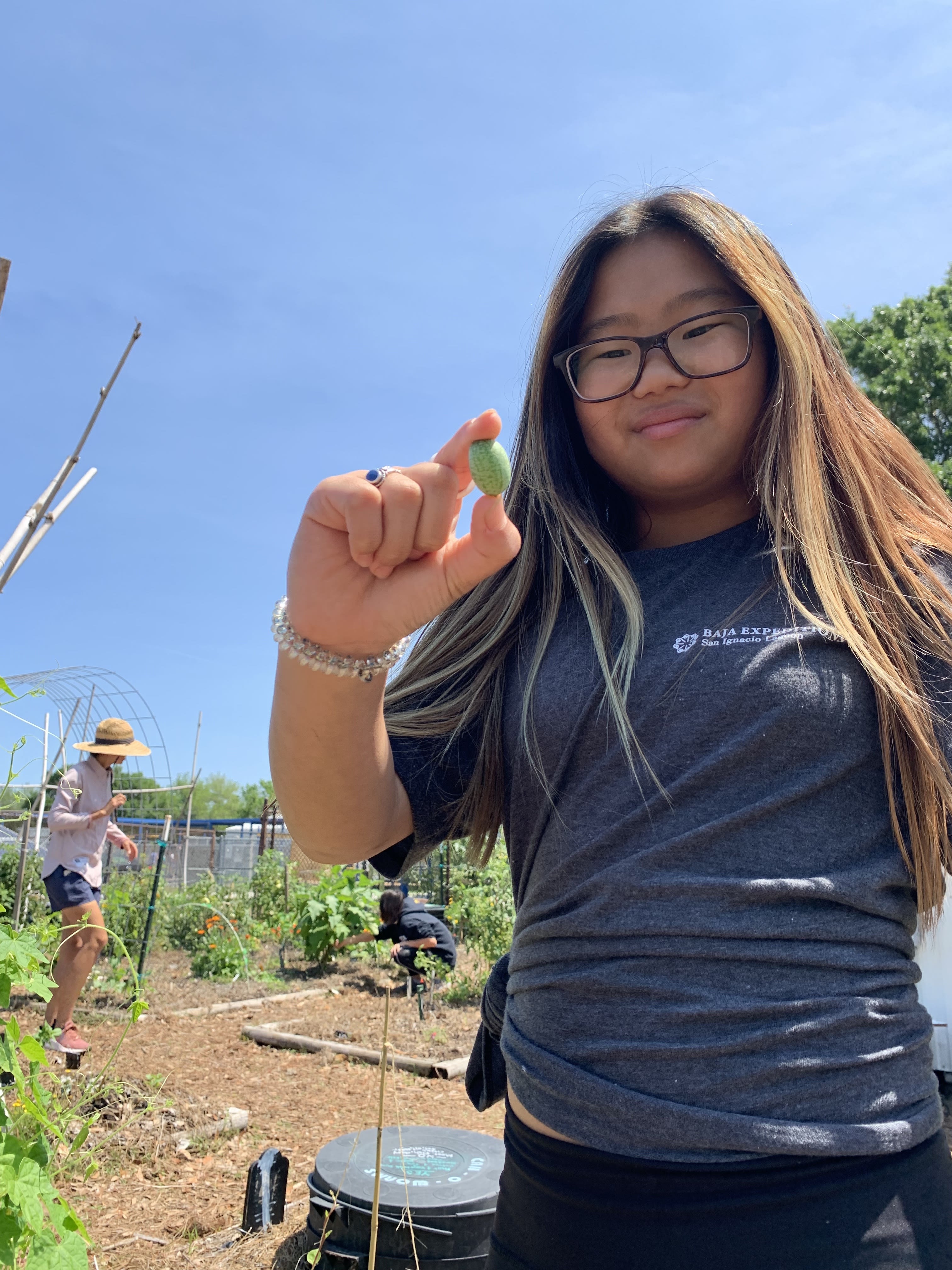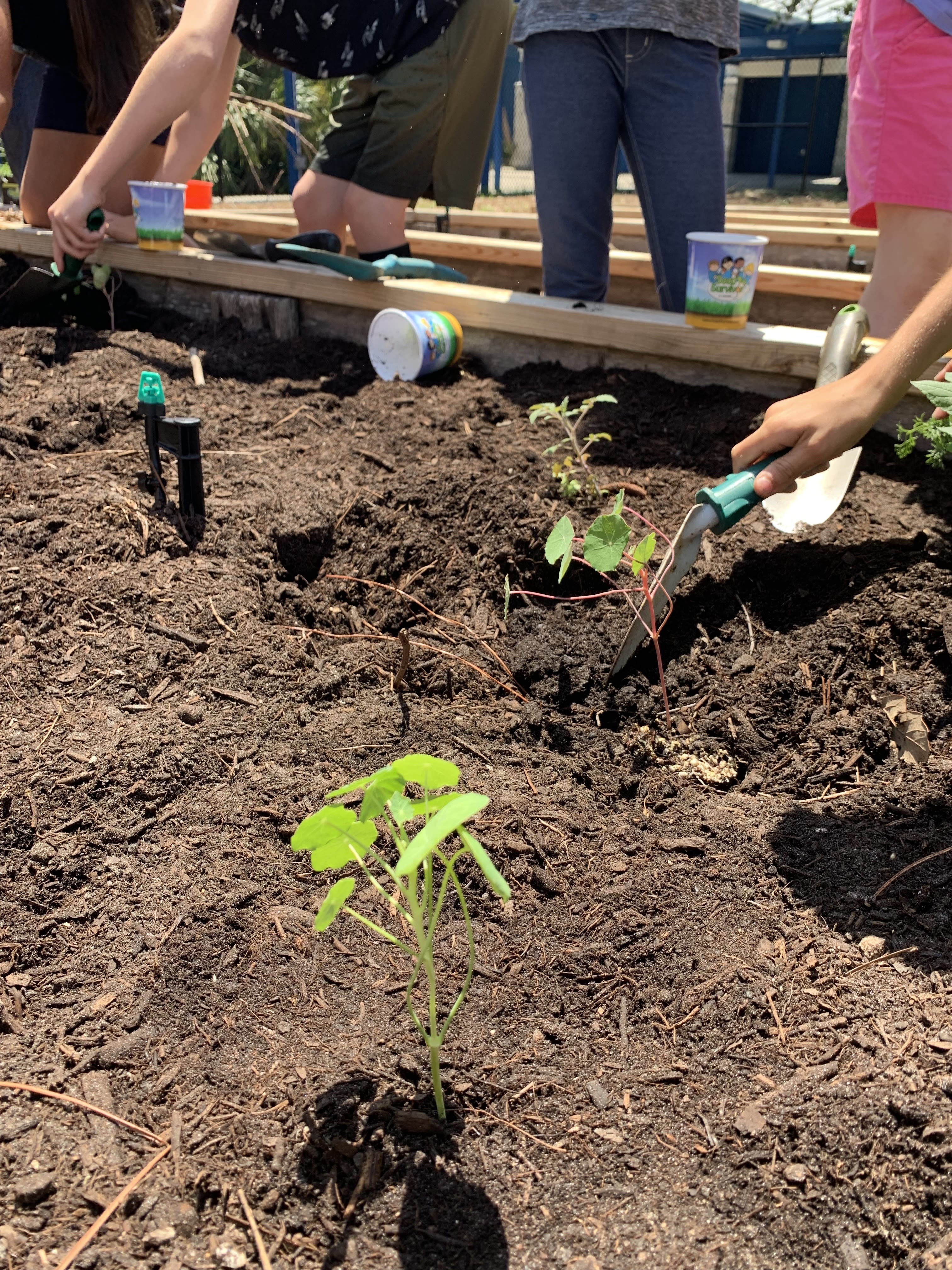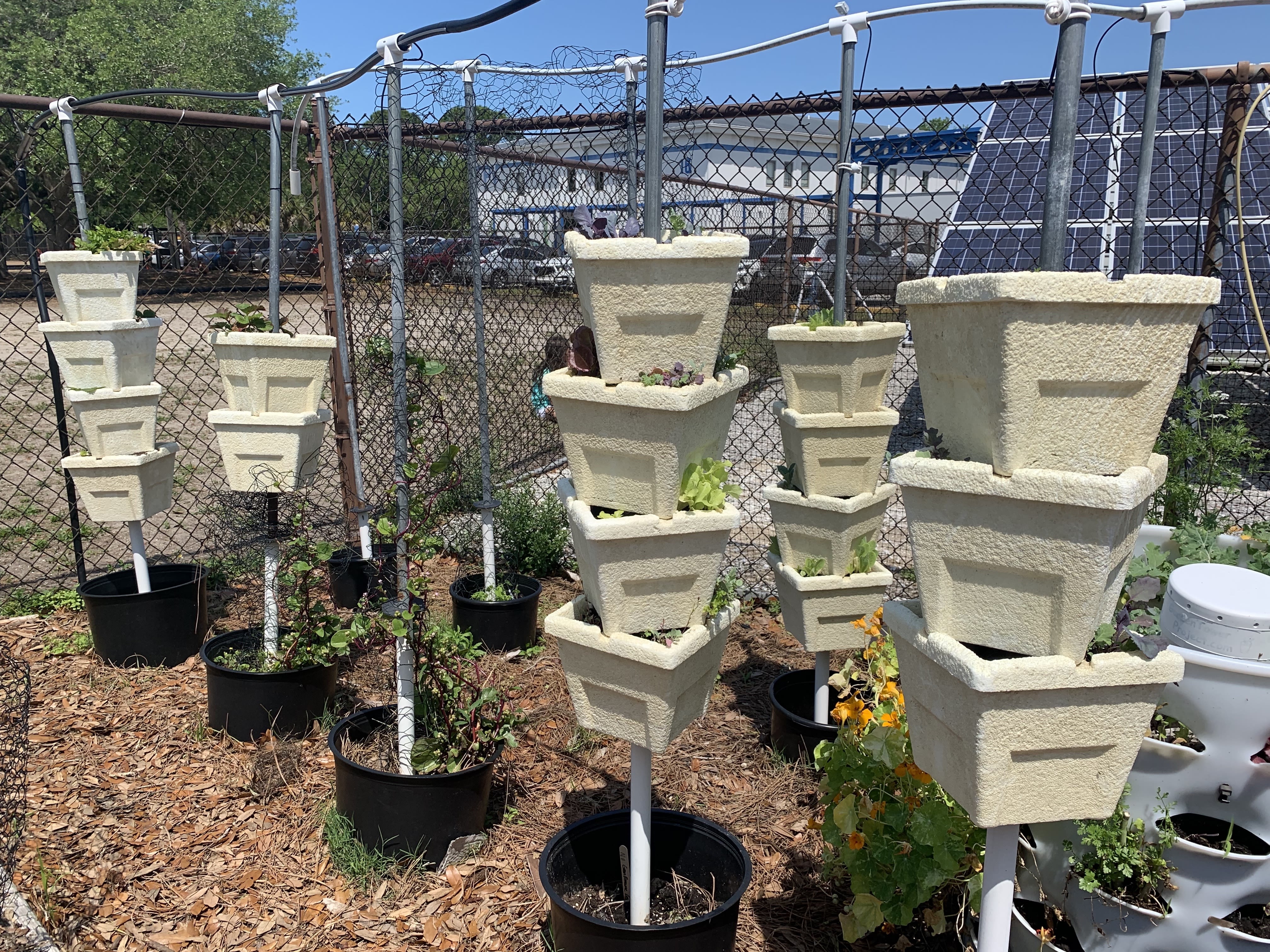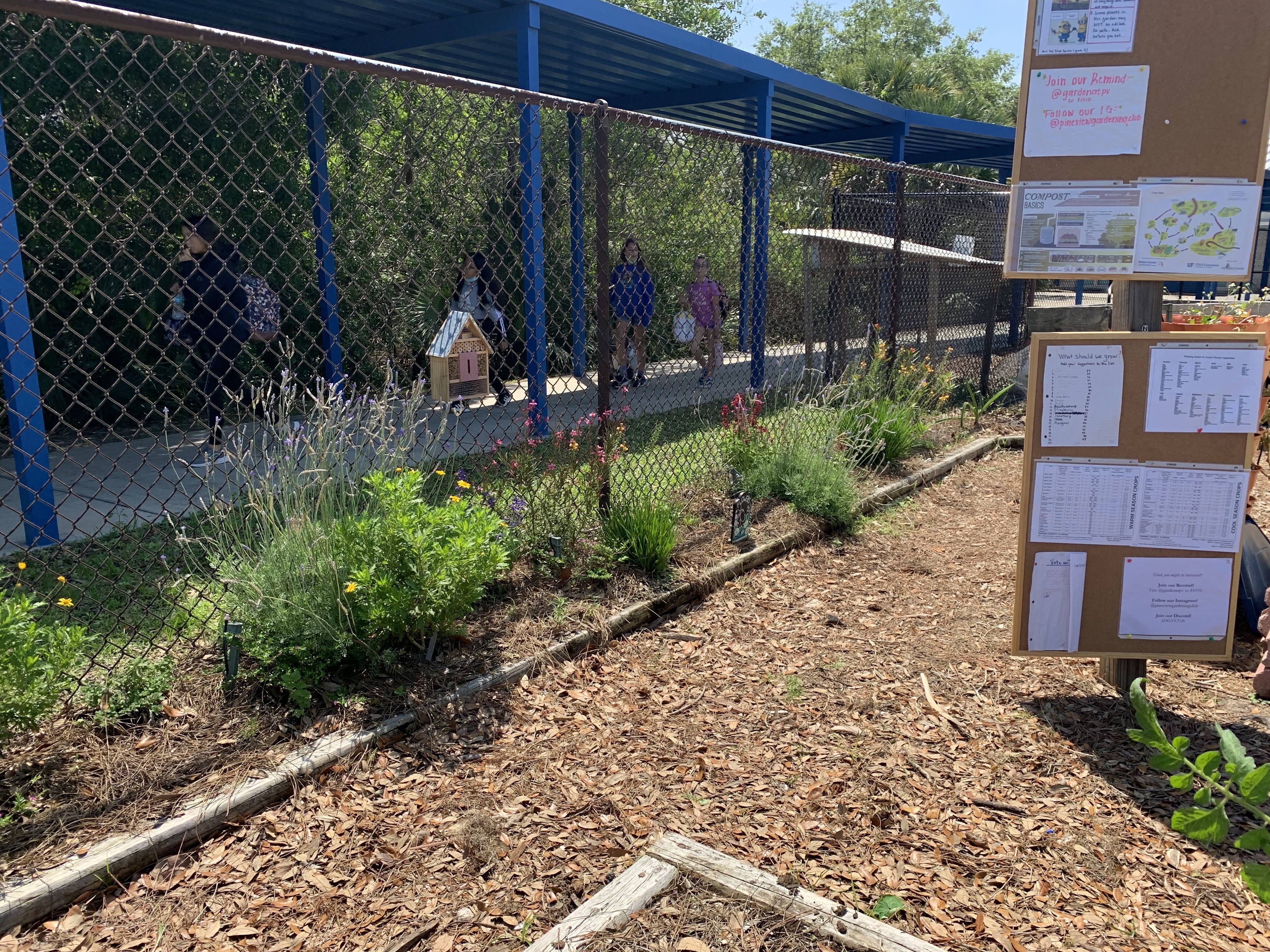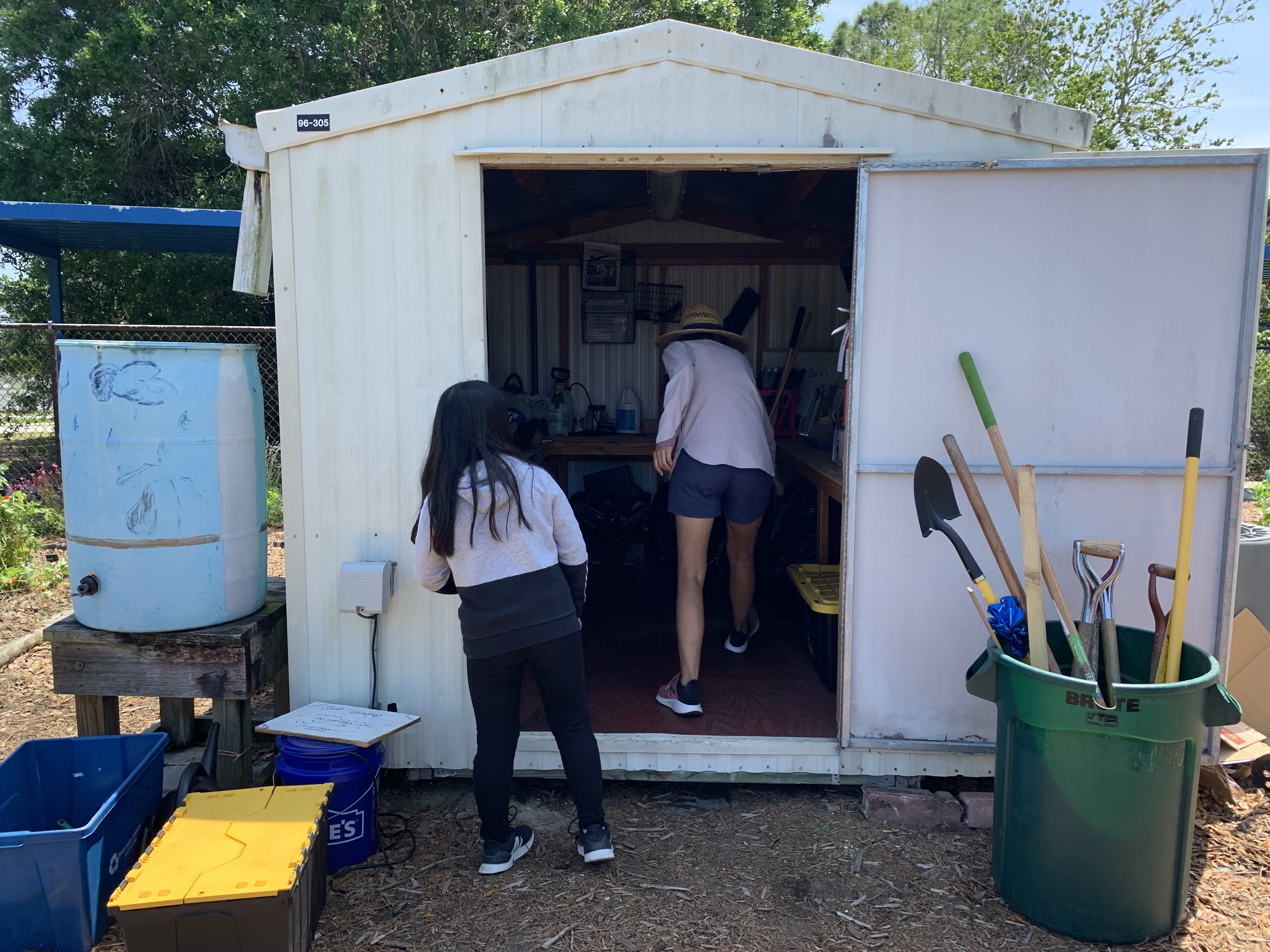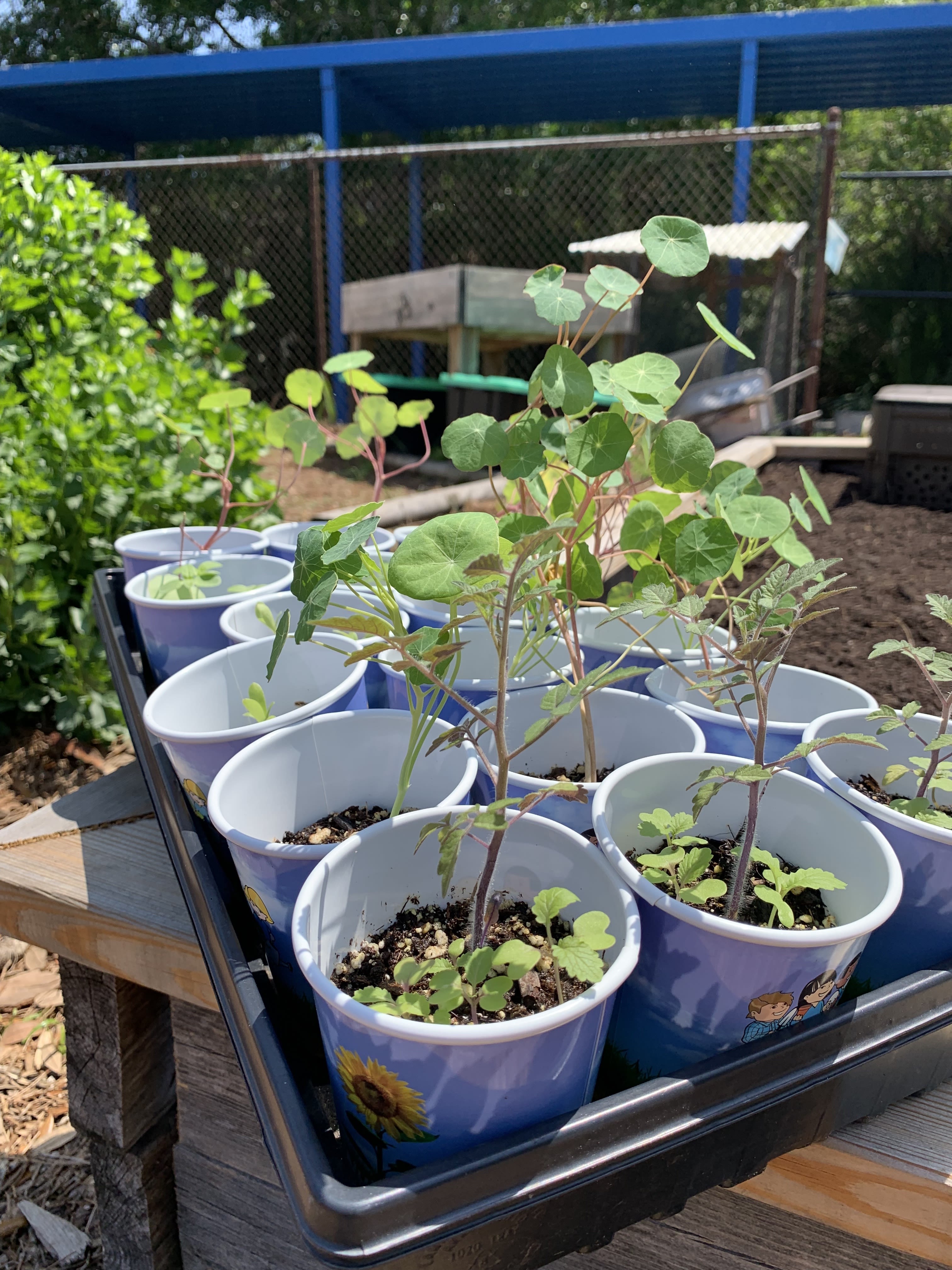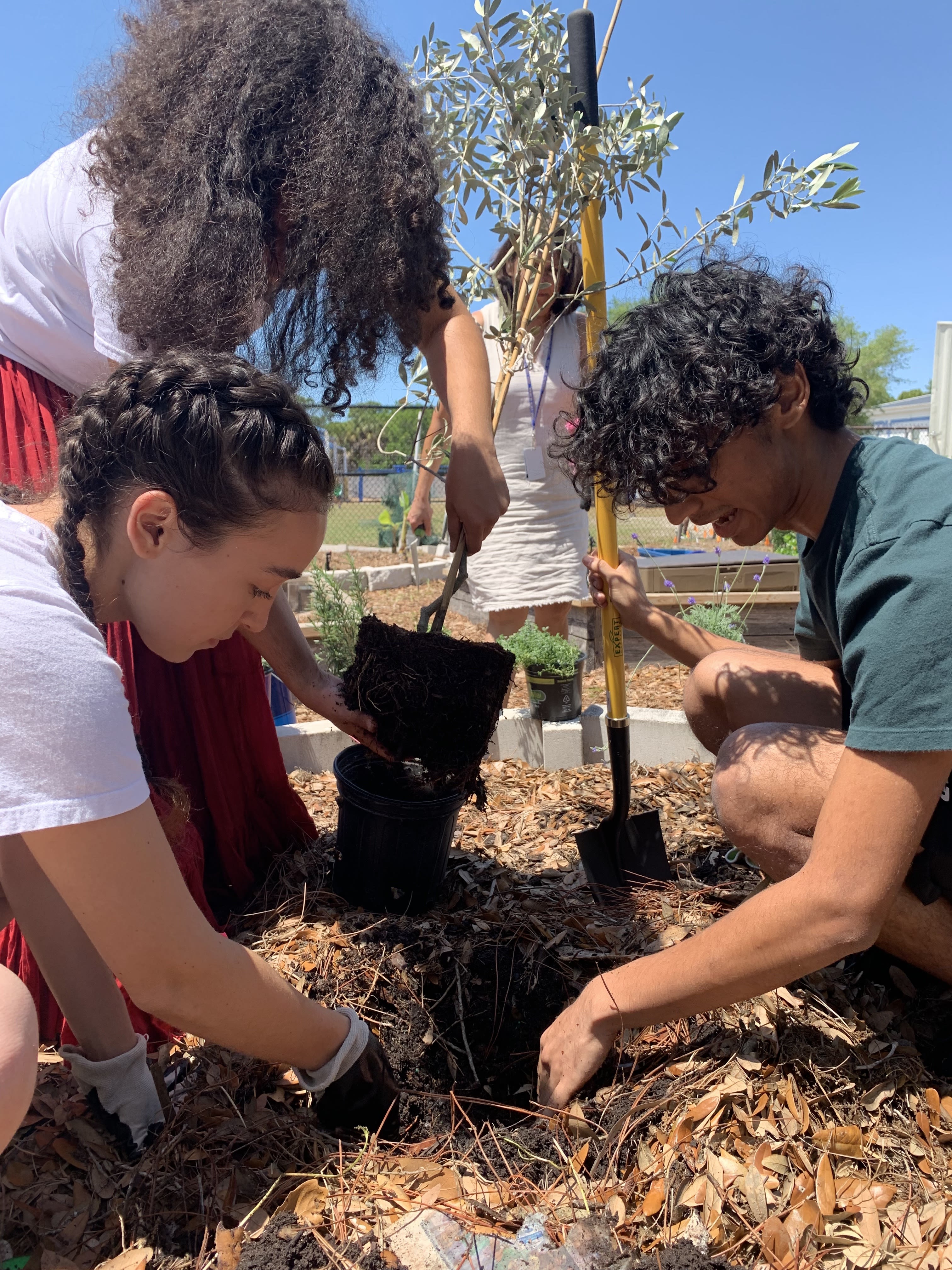Pine View School's Garden Is Teaching Kids the Importance of Sustainability
One of the many ways we can celebrate Earth Month this year is by imparting love and appreciation for the earth to the next generation. School gardens are an impactful, and increasingly popular, way to do that. There are more than 5,000 school gardens in the U.S., and programs like Whole Foods Market's Whole Kids Foundation fund school gardens and the garden-to-cafeteria food they produce.
Since 2012, The U.S. Department of Education has also awarded schools throughout the U.S. with green ribbons for sustainable facilities, health practices and teaching effective environmental education. More than 400 schools have been recognized.
In Sarasota, Pine View School is part of the trend with its thriving sustainable school garden. The garden is almost completely student-run, and all materials used in its development were repurposed.
Pine View mom and former lawyer Lesley Sachs always had a green thumb, but wanted to take it to the next level by learning to grow food and teaching students how to do the same.
"The garden's been here for a while, but it would thrive in ebbs and flows," says Sachs. "When we took it over at the beginning of the school year, we started with plants that are easy to grow in Florida and its sandy, gritty soil, like tomatoes, peppers and okra. That gave us the confidence and motivation to continue growing."
Once Sachs and a group of Pine View seniors who started the gardening club on campus saw the plants thriving, they moved to more complex topics, like composting, making natural fertilizer and planting more exotic plants.
I was invited to tour the garden on a sunny Tuesday morning, after Sachs had already gotten to work with a group of fourth graders making what she calls "compost tea," a natural fertilizer made of worm casings, seaweed, molasses and water. She pours the concoction on the plants once a week after mixing large bucket's worth in the garden's shed. The kids took turns watering plants, weeding and harvesting the ripe produce.
Sachs sees and feels their sense of accomplishment and pride.
"They love bringing fruit and veggies home for their family to cook and eat," she says. "Witnessing the process of how food grows, from start to finish, gives them an appreciation for the land, for the food they get at grocery stores and for the farmers who do this work every day."
The garden also teaches the students about sustainable practices. Everything you see in it has been repurposed. Food scraps from the school's cafeteria (citrus peels, lettuce heads, strawberries etc.) are collected by students and buried in the soil to enrich it with nutrients. This reduces the school's food waste. The raised soil beds are made of repurposed wood from old school picnic tables.
Even the irrigation system, which automatically sprays the plants a few times a week, was installed by local garden champion and chef Paul Mattison, owner of the Mattison's restaurant group.
"We are so fortunate to have the help of not only the school, but of the community, to keep this project going," says Sachs. "We've received a few grants, one of which will fund a new food forest at the back of the garden, with olive, citrus and more banana trees."
During my tour, arranged by a group of sixth graders, the garden was in full swing. I was shown thriving eggplant, peppers, tomatoes, passionfruit trees and even cucumelons--a delicious mix of a miniature melon and cucumber, which I got to taste right off the plant, since no chemicals are used in the garden. There was also okra, lettuce stacked in hydroponic towers (an upright, space-saving growing system), banana trees surrounding a compost circle and a variety of herbs and edible flowers.
The garden also boasts a desert-like succulent tower, small bee hive houses where local bees can pollinate, and worm composting bins—basically "worm apartments," as one student called them, where red wriggler worms can live to enrich the soil. (While the students had no problem digging for them, I politely passed.)
"We do get the occasional pests, but we have a rule not to disturb the wildlife and nature that visits the garden, no matter the species," Sachs explains. "This also teaches kids to respect all living things, the natural cycle of ecosystems and innovate new ideas to keep pests away, like with compost tea or chicken wire covering plants."
Another method for pest control method was explained to me by senior and garden club co-founder Connor Lafo. The secret? The natural smell of certain plants wards off insects.
"We grow basil next to tomato plants because the smell of basil is a natural insect repellant," says Lafo. "Other strong smelling herbs are planted next to leafy plants for this same reason. They also help each other grow by sharing soil nutrients."
Another senior, Laura Gayer, added that some plants are nitrogen fixing, meaning they help balance the levels of essential nitrogen in the soil and air when grown in the right circumstances. Students learned this not only from Sachs, but from a camp they attended last summer at the Suncoast Science Center's Fab Lab, where they learned to make microforests.
"That camp gave us the inspiration to bring this garden back to life," says senior Sahio Agarwal. "That and growing things here has given me a whole new appreciation for Florida's landscape. I used to not really like the way Florida looked, but now that I can recognize native trees and their functions, even if just out for a walk, I see the beauty in it."
Agarwal has been so moved by the garden experience that he plans to major in environmental engineering when he attends college in the fall. Gayer and Lafo agreed they would carry these growing skills into the next chapter of their lives, whether it's rallying for gardening clubs on their college campuses or growing their own gardens—even small ones on dorm or apartment balconies.
"These kids really know their stuff," Sachs says proudly. "They often help me teach the younger students that come in for classes."
Sachs teaches elementary, middle and high school kids. When I was there, third graders were planting everglade tomato seedlings that they grew in science class. Sachs explained how to gently pull the roots out of the fixed circular position they form when in the pot so they could grow down strong into the soil.
The food forest portion of the garden is expected to be completed by next school year, when Sachs hopes to have even more plants growing and innovative new ways for the garden to be even more sustainable. She wonders what the impact would be if every school in Sarasota County composted food waste and started a garden.
As for Pine View's senior gardeners, "we hope that the garden will keep going once we've graduated," says Gayer. "We like to think everyone loves it as much as we do, and that there are enough students who care about it."
For more information about the Whole Kids Foundation, or to start a garden at your school, click here.
